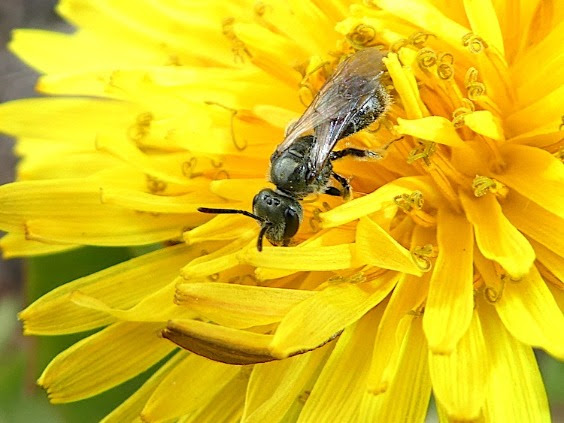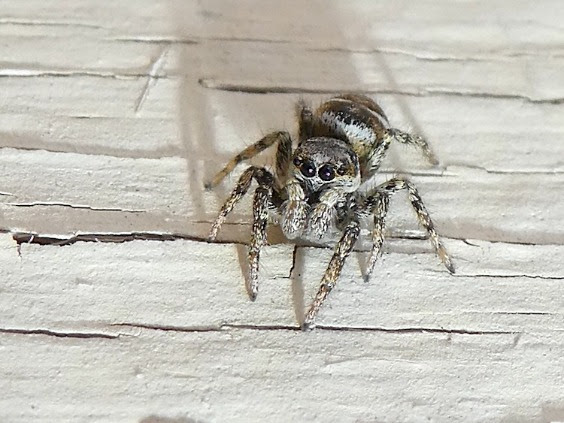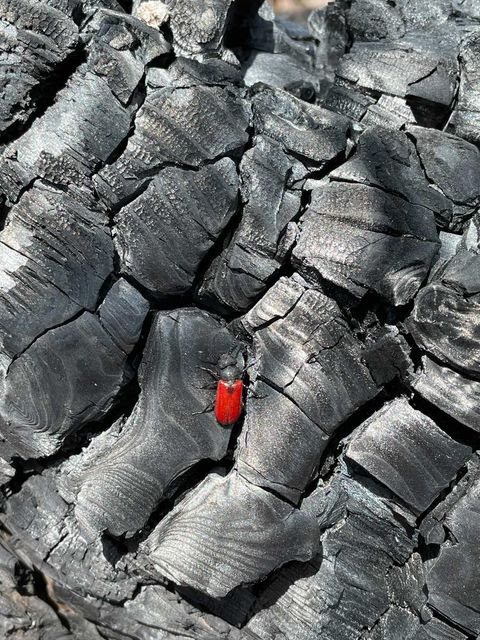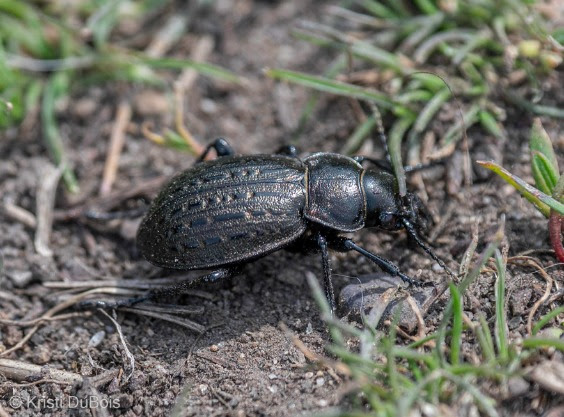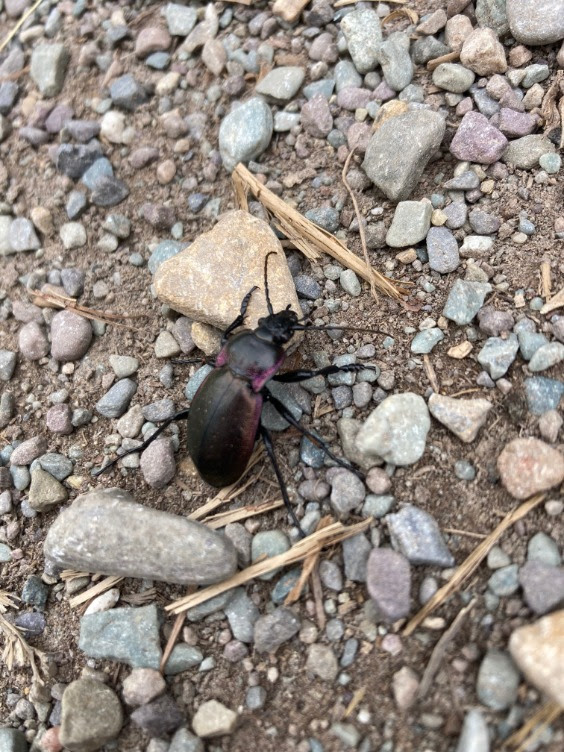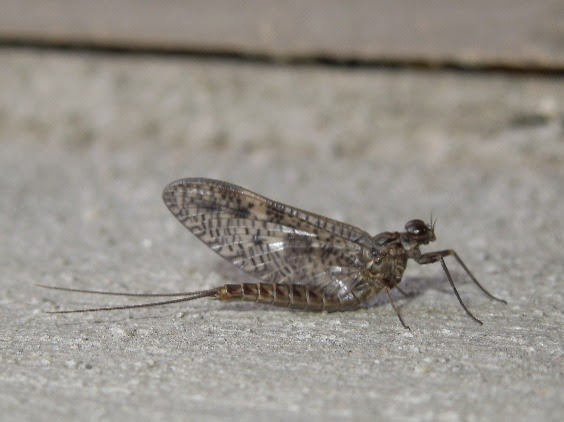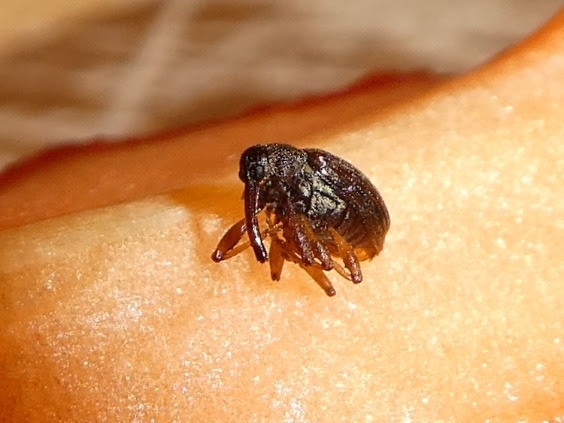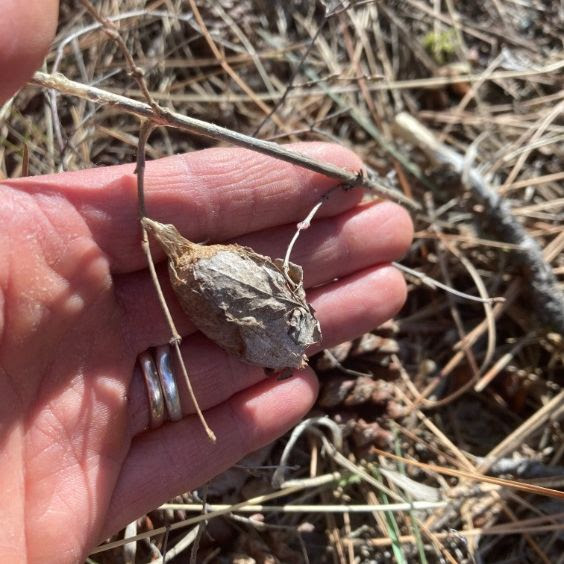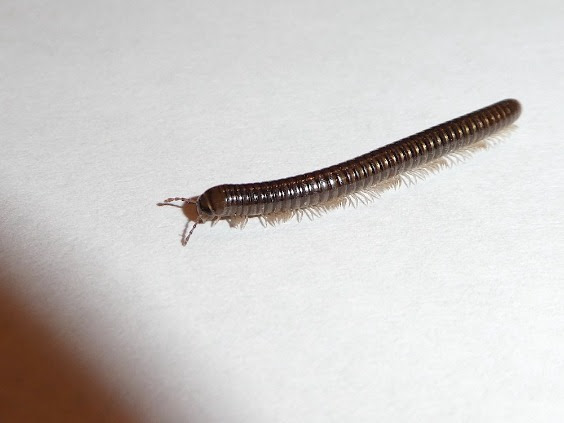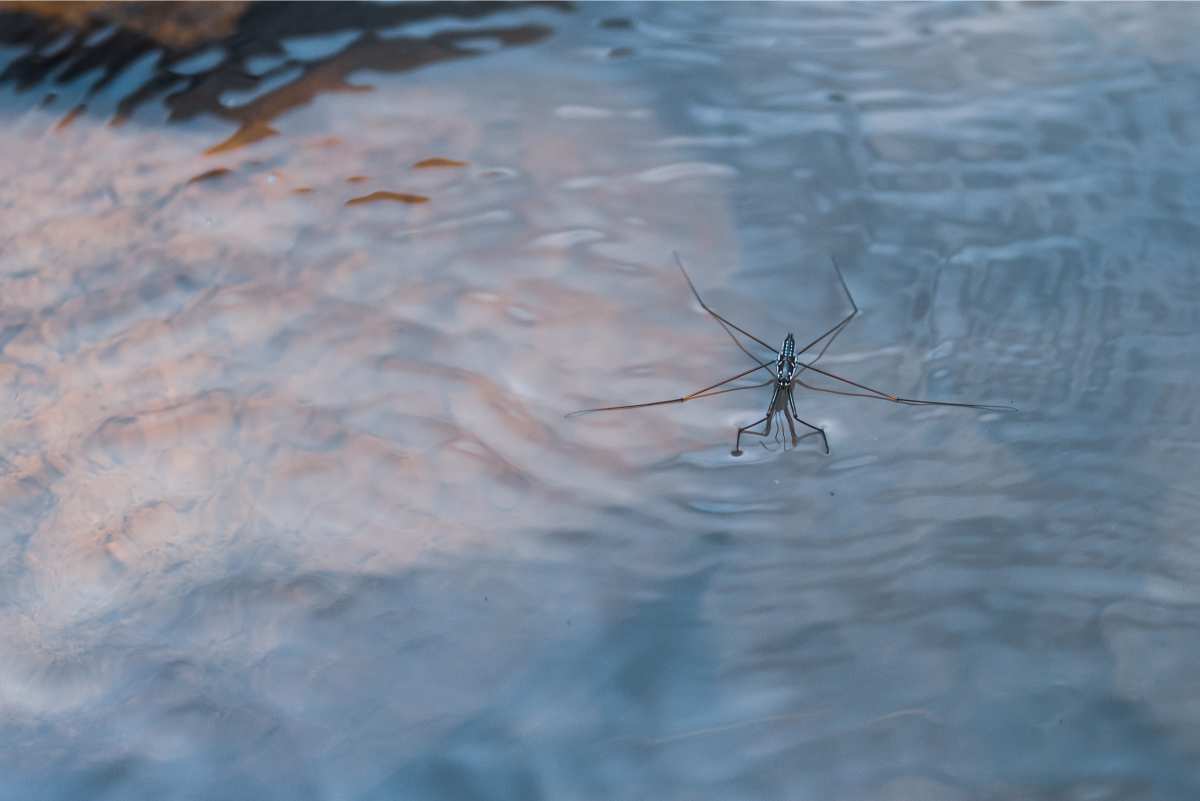Some species of sweat bees are attracted to our sweat, alighting on our skin and lapping it up for moisture and salt. They sometimes sting if disturbed, though the sting is not very painful. […]
Read MoreArticles by: Butterfly House
Zebra Jumper (Salticus scenicus)
If you spend time outside gardening, you’ve likely run into this beautiful spider before. Like other jumping spiders, Zebras have great eyesight. Their eyes can actually form detailed images, making […]
Read MoreStansbury’s Blister Beetle (Tricrania stansburyi)
We’re glad Melissa and her son admired these boldly colored beetles with eyes only, as they can ooze a liquid that can blister skin. The chemical responsible, cantharidin, is highly […]
Read MoreCaterpillar Hunter Beetle (Calosoma moniliatum)
Ground beetles in the genus Calosoma “are known as ‘searchers’ for their feverish hunting behavior” (Kaufman Field Guide to Insects of North America). And as their name suggests, they’re after caterpillars—often climbing […]
Read MoreEuropean Ground Beetle or Bronze Ground Beetle (Carabus nemoralis)
These European transplants, introduced roughly 150 years ago, are now widespread in their North American range. Flightless and nocturnal, they prowl gardens, yards and open, wooded areas, for soft-bodied invertebrates. […]
Read MoreMayflies (order Ephemeroptera)
Kelly shared several photos of some mayfly beauties she found on her porch. Although these two look markedly different, we believe them to be the same species. The top mayfly, […]
Read MorePepper Weevil (Anthonomus eugenii)
This little fella is Pepe III, the third Pepper Weevil to make it to Jen and Glenn’s house via a green pepper purchased at the grocery store. They found their first in […]
Read MorePolyphemus Moth Cocoon (Antheraea polyphemus)
Helena noticed a cocoon hanging from a branch alongside Rattlesnake Creek. She carefully collected it and brought it home for observation. Shortly after, she reached out to us for recommendations to help […]
Read MoreEurasian Millipede (Ophyiulus pilosos)
Millipedes and centipedes both have a lot of legs, but they have some key differences. Millipedes are slow-moving, have two pairs of legs on most segments, and are harmless decomposers. […]
Read MoreNotes from the Lab: Water Striders
Welcome back to the Lab! Striders, skeeters, skippers, water bugs, pond skaters, or Jesus bugs; these predacious, aquatic insects go many common names and are some of the first insects to show up when […]
Read More